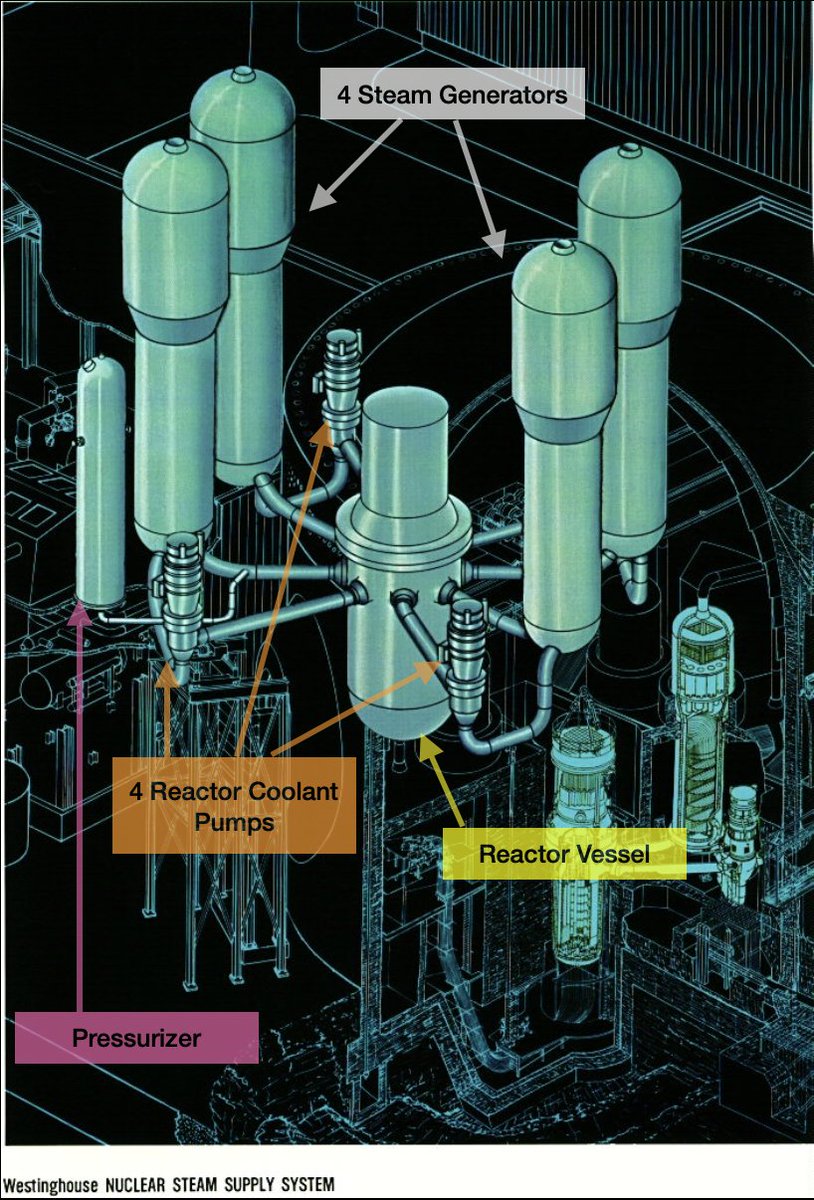
Am I the only one that wonders what would happen if I fell into those pools where spent nuclear fuel rods are cooled down?
How would falling in here affect our health? And could we actually survive this?
Let’s evaluate this possibility together.🤔
How would falling in here affect our health? And could we actually survive this?
Let’s evaluate this possibility together.🤔

So, I’ve just accidentally fallen into a spent fuel pool. But what is it?
While powering a nuclear reactor, the fuel rods become very hot. We’re talking 1k°C (1832°F), so this pool of crystal clear water is meant to cool spent fuel rods after they come out of a nuclear reactor.
While powering a nuclear reactor, the fuel rods become very hot. We’re talking 1k°C (1832°F), so this pool of crystal clear water is meant to cool spent fuel rods after they come out of a nuclear reactor.
Spent fuel rods stay in the SFP typically for 2-5 yrs and are stored under ~20ft of water.
Have you seen one of those? 👇
Have you seen one of those? 👇

Water not only helps to cool down the used fuel rods but essentially acts as a biological shield by absorbing & deflecting the neutron radiation bouncing against it.
This makes it completely safe to stand near the pool without ill effects.
This makes it completely safe to stand near the pool without ill effects.

But what happens if you fall into the water? You’ll quickly notice the pool's temperature as soon as you orient yourself.
This won’t be the refreshing dip you’re thinking. Instead, it’ll be around 30°C (86°F).
So a bit colder than your average hot tub but still very warm.
This won’t be the refreshing dip you’re thinking. Instead, it’ll be around 30°C (86°F).
So a bit colder than your average hot tub but still very warm.
Now, let’s hope you didn’t accidentally turn off the water flow as you fell into the pool.
If you did, you’d be in serious trouble since spent nuclear fuel pools are constantly cycling out water to keep it at a cool enough temperature.
If you did, you’d be in serious trouble since spent nuclear fuel pools are constantly cycling out water to keep it at a cool enough temperature.
Remember, these fuel rods are super hot. And if the water isn’t cycled out, it would heat up significantly & slowly evaporate over time. Resulting in you burning to a crisp.
So, now that you’re starting to swim in this “jacuzzi," when do you turn green and gain superpowers?
So, now that you’re starting to swim in this “jacuzzi," when do you turn green and gain superpowers?

Well, although that sounds fun, that wouldn’t happen.
The water not only protects the people outside the pool but also protects you if you happen to fall inside one, & as long as you don’t swim several meters underwater to touch the fuel rods, you’d be completely fine.
The water not only protects the people outside the pool but also protects you if you happen to fall inside one, & as long as you don’t swim several meters underwater to touch the fuel rods, you’d be completely fine.
In theory, you could swim in this pool until you looked like a raisin without feeling any adverse effects.
These pools might be a lot cleaner & safer than an average public pool. You won’t find any germs or children peeing in the water here.😜
These pools might be a lot cleaner & safer than an average public pool. You won’t find any germs or children peeing in the water here.😜
In fact, swimming in this pool would expose you to less radiation than you experience in your everyday life.
Check these radiation dose examples from @CNSC_CCSN 👇
Check these radiation dose examples from @CNSC_CCSN 👇

Now that you know this, please don't try to swim in a SFP, or you could get in trouble & a hefty fine to pay.
If you'd like to know more about spent nuclear fuel, check out these 5 fast facts by @GovNuclear 👇
If you'd like to know more about spent nuclear fuel, check out these 5 fast facts by @GovNuclear 👇
https://twitter.com/nuclearhazelnut/status/1510471734490804224?s=46&t=ERebCmZyB6g0kYang1srMg
If you'd like to read more about SFP and used fuel:
📖ans.org/nuclear/radiat…
📖ne.anl.gov/pdfs/nuclear/n…
📖nuclear-power.com/nuclear-engine…
📖ans.org/nuclear/radiat…
📖ne.anl.gov/pdfs/nuclear/n…
📖nuclear-power.com/nuclear-engine…
• • •
Missing some Tweet in this thread? You can try to
force a refresh















